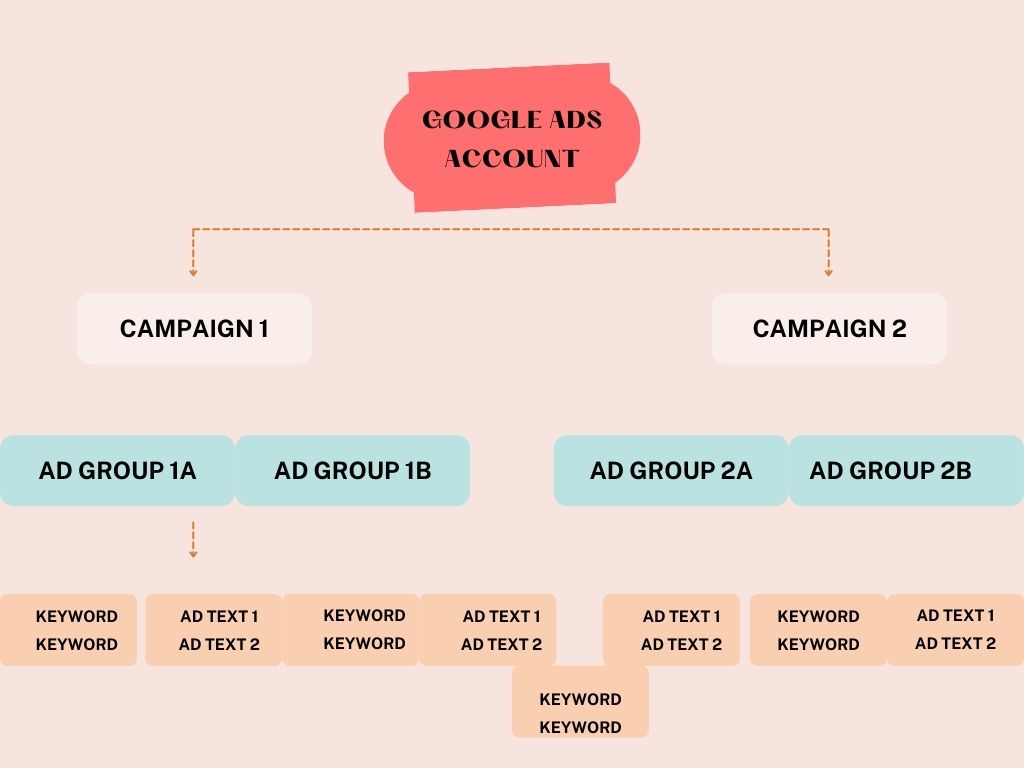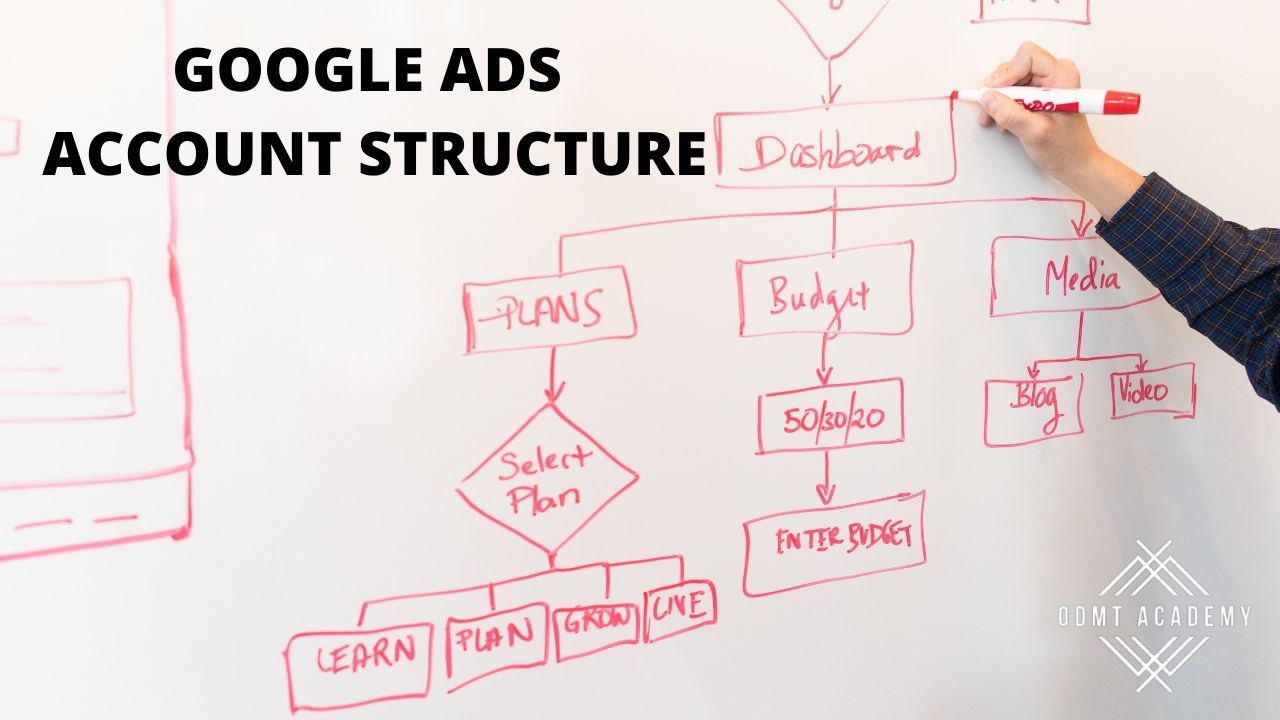A Google AdWords account is divided into campaigns, which are then divided into ad groups. Ad groups are made up of a set of keywords and ads that are relevant to those keywords. Depending on the purpose of your advertising, where you want them to appear, and whether or not you want to include an image, videos, animations, or other elements, you can write them for Google’s Search Network or Display Network. You’ve come to the right place if you’re starting a Google Ads account for your business, but don’t know where to start. Let’s dive into how the google ads account structure is.

GOOGLE ADS ACCOUNT STRUCTURE:
1) ACCOUNT:
The first step in creating and maintaining a successful account is to create one. All you have to do now is create an account by entering your email, password, business name, and billing information. You may also enter the URLs of the websites you want to promote so that your campaigns can be built around them.
2) CAMPAIGN:
A campaign focuses on a single product or a set of items. EBay, for example, might run many campaigns—one for clothing, another for gadgets, and yet another for books. Each campaign has a set of parameters that apply to all the ad groups within it. Varied campaigns, for example, would have different budgets and target audiences. They’d run at various times of the day or during various months of the year. There are even more advanced options, such as how these adverts compete for clicks. You can target multiple keywords and audiences by dividing your ads into different campaigns.
3) AD GROUPS:
One or more ad groups make up a campaign. Ad groups are simply that: a group of ads aimed towards a set of related keywords. This allows you to aggregate keywords that are related and construct advertising around a common topic. The landing page you want users to go to once they click is also included in each ad. The keywords should be themed, and the ad text should be closely related to the keywords in the ad group and accurately reflect the search queries’ intent.
4) KEYWORDS:
The keywords you choose throughout your account are an important element of the overall structure and performance of your account. To obtain the best relevance, quality scores, and conversion rates, make sure your keywords are placed under the appropriate ad groups and campaigns. Make sure you pay attention to your keyword match types as well. The phrase match is one of the most popular and effective match types.
5) AD TEXT:
This is the text that will be displayed when your ad is active. Each ad group should contain 2-3 ads that all go to the same landing page. To outperform your competitors in the search results, it’s critical to follow AdWords guidelines. A/B test your ads over time, and properly showcase the benefits of your product.
WRAPPING UP:
Google AdWords is a terrific platform for businesses to advertise on, since you can obtain immediate website traffic and sometimes even immediate results! However, most AdWords accounts require time, work, and continual administration to properly build out and achieve the best results. Yes, the influence on your ROI may occur much faster than with SEO, but it will still require some patience. If you are struggling to get the results, you deserve from your business Google AdWords account, feel free to call or mail ODMT for assistance.
